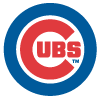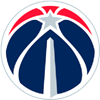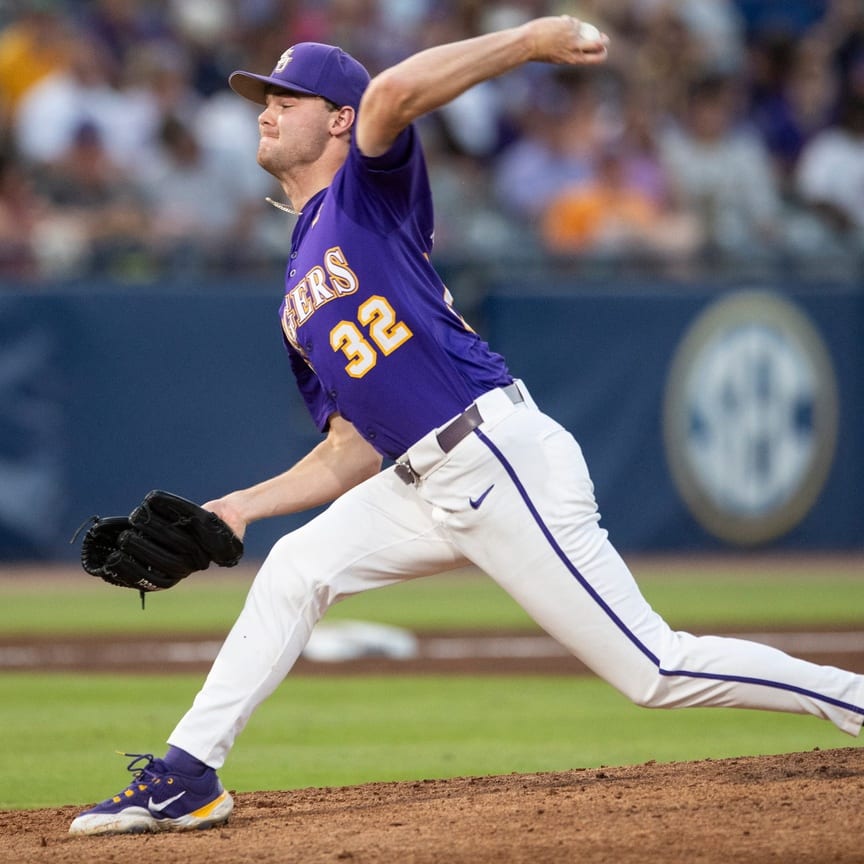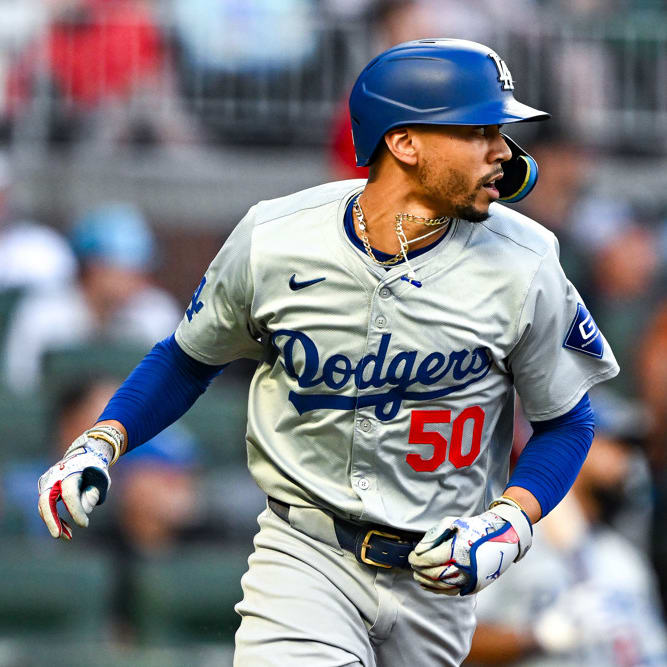There has been a lot of talk regarding how individual hitters, or at least a specific set of batters will be aided with MLB legislating the shift. There has been a lot less chatter regarding how pitching will be influenced.
To briefly review, starting in 2023, at least two fielders need to be situated on either side of the keystone, all with their cleats off the outfield grass (or turf). Non-conventional alignments are permitted, such as the third baseman where the shortstop normally plays and the shortstop guarding up the middle, but still to the left of the second base bag. Additionally, outfielders are free to set up anywhere, including the left fielder playing the rover position in right field, with the other two outfielders patrolling the rest of the space.
In 2022, shifts were deployed 55 percent of the time to lefty swingers with right-handed batters seeing the shift in 19.6 percent of their trips to the dish. Overall, 33.9 percent of all plate appearances were defensed via the shift.
As fantasy managers, we all want to know which players will be most affected, and by how much. Unfortunately, it's not that simple. Well, identifying players most likely to benefit is plausible. The extent, however, is just a guesstimate.
Some are frustrated by that last sentence. Don't we have all sorts of shift data? Can't we overlay park images?
The objective is to determine how the outcome of a batted ball event with the shift would differ without it.
There has been a lot of talk regarding how individual hitters, or at least a specific set of batters will be aided with MLB legislating the shift. There has been a lot less chatter regarding how pitching will be influenced.
To briefly review, starting in 2023, at least two fielders need to be situated on either side of the keystone, all with their cleats off the outfield grass (or turf). Non-conventional alignments are permitted, such as the third baseman where the shortstop normally plays and the shortstop guarding up the middle, but still to the left of the second base bag. Additionally, outfielders are free to set up anywhere, including the left fielder playing the rover position in right field, with the other two outfielders patrolling the rest of the space.
In 2022, shifts were deployed 55 percent of the time to lefty swingers with right-handed batters seeing the shift in 19.6 percent of their trips to the dish. Overall, 33.9 percent of all plate appearances were defensed via the shift.
As fantasy managers, we all want to know which players will be most affected, and by how much. Unfortunately, it's not that simple. Well, identifying players most likely to benefit is plausible. The extent, however, is just a guesstimate.
Some are frustrated by that last sentence. Don't we have all sorts of shift data? Can't we overlay park images?
The objective is to determine how the outcome of a batted ball event with the shift would differ without it. Here is the problem. There is no way to know where the defense would have been set without the shift. The result presumes knowing the defense deployed, not to mention the approach of the pitcher and batter may have been different. The exact outcome cannot be extracted with 100 percent certainty.
Calm down, everything will be okay. We don't know where an outlying BABIP will regress either. The same goes for HR/FB, LOB% and any other metric with an unknown (or luck) element. Mathematically, the way to handle the shift is the same as these other examples: regressing actual to expected.
Maybe this has been semantics all along, but instead of saying the result of a certain batted ball event would have been different, it's better to discern the probability of varying outcomes. Doing so unveils expected hits (xHits). Now we have an entity against which to regress, helping quantify the effect of the shift.
The news gets even better. The xHits metric on Statcast essentially achieves what we all desire: the probability of outcomes for a batted ball without the shift. Via research not presented here, using BABIP, it can be demonstrated the shift primarily influences groundballs from left-handed batters. If you look at the xHit leaderboard, measured by the biggest delta between expected and actual batting average, it's not a coincidence there is a preponderance of left-handed or switch-hitting batters at the top.
It's not perfect, but regressing actual hits to expected hits helps 2023 hitting projections account for the shift. What about pitching?
The chief difference between evaluating hitters and pitchers is some hitters were burdened by the shift in just about all of their at-bats, while the percentage of plate appearances a pitcher was backed by a shift is far more balanced, clustering around the 33.9 percent league average. Some teams shifted more, while right-handed pitchers probably faced more lefty swingers.
With a lower percentage of at-bats affected by the shift, the xHits metric for pitchers reflects more of the non-shift related variance. Many formulaic-driven projection systems will already regress to xHits, but there are likely some hurlers destined to give up a few more knocks in 2023.
The following table shows the BABIP (batting average on balls in play) of hard grounders since 2015, broken down by batter and pitcher handedness:
Season | ALL | LHB v RHP | LHB v LHP | RHB v LHP | RHB v RHP |
|---|---|---|---|---|---|
2015 | 0.251 | 0.241 | 0.241 | 0.257 | 0.258 |
2016 | 0.254 | 0.243 | 0.233 | 0.266 | 0.262 |
2017 | 0.252 | 0.244 | 0.247 | 0.255 | 0.258 |
2018 | 0.247 | 0.233 | 0.239 | 0.255 | 0.256 |
2019 | 0.243 | 0.232 | 0.238 | 0.257 | 0.247 |
2020 | 0.236 | 0.210 | 0.219 | 0.254 | 0.255 |
2021 | 0.241 | 0.227 | 0.233 | 0.251 | 0.250 |
2022 | 0.240 | 0.219 | 0.226 | 0.251 | 0.253 |
It's clear the shift has aided both right-handers and southpaws when facing left-handed batters. The catch is volume, as displayed here via number of groundballs in each matchup:
Season | LHB v RHP | LHB v LHP | RHB v LHP | RHB v RHP |
|---|---|---|---|---|
2015 | 18122 | 4482 | 10010 | 20695 |
2016 | 17087 | 3917 | 9425 | 20829 |
2017 | 16640 | 3919 | 9532 | 20624 |
2018 | 16119 | 4135 | 10157 | 19496 |
2019 | 15829 | 4105 | 9700 | 19624 |
2020 | 6117 | 1448 | 3428 | 6796 |
2021 | 15180 | 4472 | 10515 | 19194 |
2022 | 15715 | 3727 | 10037 | 20549 |
The class of hurlers most likely to be hurt by shift legislation is groundball righties. Before diving into some examples, similar breakdowns of outfield line drive and flyball data are far less conclusive, so it's best to focus on groundball data. For what it's worth, the same conclusion was derived for similar investigations with hitters.
Okay, here's the fun part. What follows is a list of starting pitchers most likely to have an increase in BABIP this season. This is beyond any natural regression they may be in line to receive. The filters are:
- Right-handed pitcher
- Minimum 40 innings pitched
- Minimum 45 percent groundball rate
- Shift deployed at least 45 percent of the time against left-handed batters
| Pitcher | No. GB | GB% | BABIP v LHB | GB BABIP v LHB | %SHIFT LHB | |
|---|---|---|---|---|---|---|
| 1 | Tony Gonsolin | 267 | 45.1% | 0.202 | 0.167 | 83.8% |
| 2 | Luis Castillo | 302 | 40.9% | 0.255 | 0.219 | 83.3% |
| 3 | Nathan Eovaldi | 176 | 43.3% | 0.264 | 0.213 | 79.5% |
| 4 | Lance Lynn | 289 | 42.1% | 0.277 | 0.250 | 76.1% |
| 5 | Paolo Espino | 176 | 45.3% | 0.320 | 0.226 | 73.9% |
| 6 | Johnny Cueto | 288 | 42.5% | 0.302 | 0.184 | 71.7% |
| 7 | Joe Musgrove | 403 | 44.2% | 0.256 | 0.173 | 70.9% |
| 8 | Michael Lorenzen | 187 | 55.0% | 0.272 | 0.219 | 65.8% |
| 9 | Mitch White | 177 | 43.2% | 0.279 | 0.160 | 65.7% |
| 10 | Glenn Otto | 276 | 43.8% | 0.219 | 0.143 | 64.1% |
| 11 | Marcus Stroman | 285 | 55.9% | 0.309 | 0.202 | 63.5% |
| 12 | Erick Fedde | 279 | 40.6% | 0.289 | 0.208 | 63.4% |
| 13 | Jon Gray | 250 | 45.8% | 0.300 | 0.219 | 63.2% |
| 14 | Alex Cobb | 302 | 63.2% | 0.345 | 0.288 | 62.6% |
| 15 | Ross Stripling | 216 | 40.9% | 0.256 | 0.183 | 61.8% |
| 16 | Noah Syndergaard | 244 | 45.4% | 0.289 | 0.148 | 61.7% |
| 17 | Zach Thompson | 220 | 41.6% | 0.257 | 0.169 | 61.7% |
| 18 | Sandy Alcantara | 480 | 52.8% | 0.230 | 0.139 | 61.4% |
| 19 | Dane Dunning | 333 | 50.0% | 0.314 | 0.208 | 61.3% |
| 20 | Shohei Ohtani | 318 | 45.3% | 0.308 | 0.173 | 61.3% |
| 21 | Pablo Lopez | 394 | 48.2% | 0.282 | 0.160 | 60.8% |
| 22 | Luis Severino | 174 | 40.8% | 0.198 | 0.170 | 60.3% |
| 23 | Paul Blackburn | 241 | 42.5% | 0.305 | 0.103 | 60.2% |
| 24 | George Kirby | 284 | 43.8% | 0.277 | 0.284 | 58.1% |
| 25 | Zac Gallen | 338 | 53.8% | 0.186 | 0.126 | 58.0% |
| 26 | Tyler Mahle | 255 | 41.0% | 0.245 | 0.254 | 57.6% |
| 27 | Logan Webb | 399 | 62.2% | 0.318 | 0.244 | 57.5% |
| 28 | Frankie Montas | 290 | 49.2% | 0.297 | 0.209 | 57.5% |
| 29 | Aaron Nola | 390 | 41.5% | 0.262 | 0.235 | 57.3% |
| 30 | Adam Wainwright | 379 | 46.2% | 0.298 | 0.233 | 55.4% |
| 31 | Corbin Burnes | 407 | 53.8% | 0.274 | 0.163 | 54.9% |
| 32 | James Kaprielian | 295 | 41.6% | 0.256 | 0.218 | 54.6% |
| 33 | Shane Bieber | 355 | 50.4% | 0.284 | 0.214 | 53.5% |
| 34 | Zach Davies | 253 | 46.8% | 0.231 | 0.162 | 53.0% |
| 35 | Carlos Carrasco | 284 | 51.3% | 0.304 | 0.183 | 52.5% |
| 36 | Kyle Gibson | 322 | 46.2% | 0.289 | 0.176 | 51.2% |
| 37 | Kevin Gausman | 291 | 40.7% | 0.317 | 0.282 | 51.2% |
| 38 | Tyler Wells | 184 | 41.2% | 0.217 | 0.151 | 51.1% |
| 39 | Merrill Kelly | 372 | 42.0% | 0.257 | 0.144 | 50.7% |
| 40 | Zack Greinke | 241 | 52.4% | 0.299 | 0.231 | 50.6% |
| 41 | Kyle Bradish | 175 | 54.8% | 0.288 | 0.200 | 49.7% |
| 42 | Graham Ashcraft | 212 | 61.6% | 0.278 | 0.230 | 49.5% |
| 43 | Brady Singer | 306 | 44.1% | 0.295 | 0.278 | 48.1% |
| 44 | Brad Keller | 247 | 50.6% | 0.263 | 0.241 | 47.2% |
| 45 | Dakota Hudson | 274 | 58.3% | 0.301 | 0.227 | 45.8% |
| 46 | Mitch Keller | 322 | 52.8% | 0.322 | 0.250 | 45.0% |
All of the data is when facing left-handed batters. Everything but the first BABIP column is specific to at-bats resulting in a grounder.
Personally, I don't feel determining an xBABIP is worthwhile, as there is too much variance and the Statcast xHit metric in essence already does it. However, there are some key names on this list.
- In today's culture, it's probably more acceptable to tell a joke in a foreign accent than dare say anything negative regarding Sandy Alcantara, but his BABIP is likely to suffer, especially with Luis Arraez and Joey Wendle playing up the middle.
- It's ironic that Shohei Ohtani, the batter, is slated to benefit from legislating the shift, but the pitcher version will likely find it a detriment.
- Tony Gonsolin is still due a visit from the regression monster, but a good deal of his perceived "good luck" on batted balls was actually boosted by a high shift rate with an extremely low BABIP on left-handed groundballs.
An anecdotal blurb can be provided for each pitcher on the list. I chose these three to call attention to the quality of pitcher with which we're dealing, especially the first two. It's necessary to at least consider everyone listed is a candidate for a high BABIP this season.
Keep in mind every pitcher will likely surrender more hits due to the lack of a shift, so it's not just the group above. However, their risk factors are higher.
Another general approach is investigating which teams used the shift more last season. That said, a higher number may not be indicative of allowing more hits this season. The fielders can still be cleverly deployed, and they may simply be better defenders, so they may still generate a lower BABIP. Even so, knowing the teams being forced to adhere to the new rules more than others is useful when tracking the effect, understanding the variance associated with work of this nature.
| Team | Overall Shift%% | Shift% vs. RHB | Shift% vs. LHB | RHB GB BABIP | LHB GB BABIP | |
|---|---|---|---|---|---|---|
| 1 | Dodgers | 52.2 | 42 | 70.5 | 0.232 | 0.217 |
| 2 | Astros | 50.4 | 25.4 | 82.1 | 0.244 | 0.217 |
| 3 | Blue Jays | 50.3 | 42.9 | 60 | 0.259 | 0.225 |
| 4 | Mariners | 45.3 | 33.8 | 63.3 | 0.257 | 0.237 |
| 5 | Marlins | 43.9 | 36.1 | 55.5 | 0.248 | 0.238 |
| 6 | Twins | 43.8 | 25.7 | 70.1 | 0.259 | 0.243 |
| 7 | White Sox | 38.4 | 18.2 | 63.4 | 0.259 | 0.230 |
| 8 | Cubs | 38 | 22.2 | 60.2 | 0.233 | 0.216 |
| 9 | Mets | 37.7 | 31.4 | 46.9 | 0.269 | 0.252 |
| 10 | Tigers | 37 | 19.3 | 66.5 | 0.279 | 0.242 |
| 11 | Rangers | 35.8 | 21.2 | 62.6 | 0.256 | 0.229 |
| 12 | Red Sox | 35.3 | 15 | 70.7 | 0.270 | 0.237 |
| 13 | Angels | 35.2 | 19.9 | 62.6 | 0.260 | 0.240 |
| 14 | Nationals | 32.8 | 12.7 | 60.8 | 0.264 | 0.244 |
| 15 | Athletics | 32.1 | 19.7 | 52.5 | 0.255 | 0.228 |
| 16 | Giants | 31.8 | 16.7 | 55.9 | 0.250 | 0.225 |
| 17 | Pirates | 31.3 | 16.2 | 52.1 | 0.244 | 0.238 |
| 18 | Braves | 29.6 | 22.8 | 38.6 | 0.254 | 0.233 |
| 19 | Reds | 29.5 | 10.1 | 55.3 | 0.256 | 0.244 |
| 20 | Cardinals | 27.9 | 17.4 | 44.3 | 0.243 | 0.224 |
| 21 | Diamondbacks | 27.9 | 14.7 | 49.5 | 0.256 | 0.223 |
| 22 | Phillies | 27.3 | 15.5 | 45.3 | 0.269 | 0.257 |
| 23 | Rays | 27.3 | 20.1 | 42.3 | 0.257 | 0.229 |
| 24 | Brewers | 26.8 | 14.6 | 47.4 | 0.243 | 0.229 |
| 25 | Royals | 26.3 | 13 | 47.7 | 0.272 | 0.252 |
| 26 | Yankees | 25.8 | 10.4 | 53.1 | 0.256 | 0.233 |
| 27 | Padres | 24.6 | 5 | 54.7 | 0.268 | 0.238 |
| 28 | Orioles | 23.5 | 10 | 46.3 | 0.254 | 0.236 |
| 29 | Guardians | 22.6 | 5.9 | 45.6 | 0.239 | 0.226 |
| 30 | Rockies | 18.5 | 11 | 27.8 | 0.246 | 0.233 |
Hmm. The table is displayed via greatest deployment of the shift, and the first four teams were all in the playoffs. Oh wait, seven of the bottom 13 clubs were in the playoffs and shifted the least. Never mind.
Reiterating that the noise in small samples will be deafening, it'll be interesting to track the component BABIP for the top teams. A way to reduce some of the variance is to group teams into subsets, maybe six groups of five teams, then gauging how each is faring in terms of component BABIP.
For those curious (like me), there was a very small correlation between the percentage of shifts versus LHB (and RHB) and the resulting BABIP.
| LHB | -0.19 |
| RHB | -0.16 |
The correlation is negative, indicating more shifting led to a slightly lower BABIP. Based on these numbers, one can argue if legislating the shift is even necessary, but that's a discussion for another day, in another setting. It's a reality, and hopefully you've been enlightened with respect to some significant starting pitchers who carry some cause for concern.





































